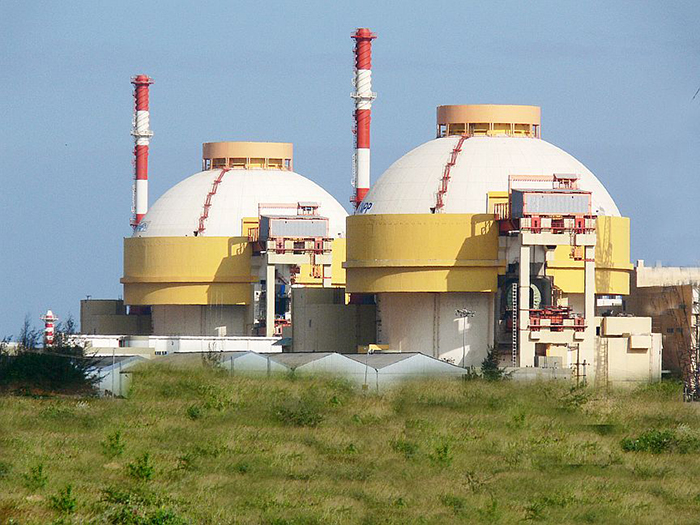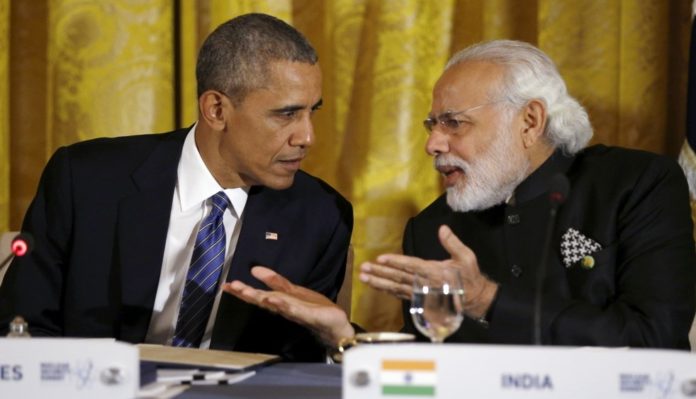The questions to effectively counter the proliferation of nuclear weapons and related material alongwith the peaceful promotion of nuclear technology across the globe have always remained practically incompatible with the strategic competition of states. The debate to cease vertical and horizontal proliferation is as old as nuclear weapons are in the world. The main connexions of the international community, especially the nuclear weapons states, are persistently engaged in designing several platforms to regulate the nuclear ambitions of non-nuclear states. Therefore, the strategic gatherings of states apparently resulted in various unilateral, bilateral and multilateral initiatives to effectively halt the entry of newcomers in the endless nuclear race while hampering the plans of non-peaceful uses of nuclear technology. Unfortunately, the policies and platforms to curtail the military–oriented uses of nuclear technology have mainly been restricted to theoretical documents without achieving desired objectives. The history of the nuclear world witnesses the unforeseen experiences rooted in the surprising actions of nuclear weapon states.
The Indian Smiling Buddha under Peaceful Nuclear Explosion (PNE) in 1974, immediately after the establishment of Non–Proliferation Treaty (NPT) reaffirmed the advocators of global non-proliferation regime that the existing counter-proliferation efforts are less productive before Indian nuclear ambitions. Indian claims of peaceful nuclear explosion reflected bellicose intents inherited in its strategic thinking which is incompatible with the regional paths of peace and stability in South Asia. New Delhi’s strategic aspiration not only halted chances of a Nuclear-Free South Asia but it also forced promoters of NPT to design something more prolific or New Delhi specific. The advocators of international non-proliferation regime established the Nuclear Supplier Group (NSG), initially called the London Group to enhance the vision of peaceful uses of nuclear technology.
In order to discourage the non–peaceful dynamics of nuclear energy and to counter the repetition of the Indian precedent, the NSG initially emphasized nuclear exports and nuclear–related exports. The NSG guidelines validate the nuclear trade between the states adherence to NPT or any of the five Nuclear Weapons Free Zones (NWFZ). In other words, the subscribers of NPT or the member states of NWFZs are legally capable to carry nuclear commerce. In response to the Buddha’s smile from Pokhran–l, India, a group of seven states (US, UK, USSR, France, West Germany, Japan and Canada) prepared the first draft of guidelines “Guidelines on Nuclear Transfers”. The gradual evolution of the seven states club provided membership to fifteen European states in 1976–77. The end of US–USSR competition for global leadership and the disintegration of Soviet Union expanded the NSG agenda to further states and added new members in the supplier group. Presently, 48 state are members of NSG who have agreed to its guidelines for the supervision of worldwide nuclear trade.
The contemporary debate of NSG and its further extension to South Asia preferred India as a potential candidate and a credible 49th country to this multilateral platform. There are a number of apprehensions about New Delhi’s nuclear status and its NSG membership gaining ambition. It is essential to overview the multifaceted impacts of India’s addition in this supplier group before considering its candidacy as a full member. A cluster of regional and extra-regional concerns regarding Indian attachment to NSG appear not to be in the attention of the international community.
The divisions among leading proponents of international non-proliferation regime and their concerns about New Delhi’s attachment to NSG has become a raging question for international community. India, neither a signatory to NPT nor a member of any five NWFZs, has generated an international debate while obscuring the existing principle avenues of nuclear non-proliferation. While opposing the main itineraries of counter– proliferation, how India will join the 48–nations club to supervise the nuclear trade is presently an unanswered question of immense importance for everyone. India’s bid for membership will be a different case which will portray a worrisome future in which any state without signing the NPT or refuting the legal status of NPT can demand its inclusion in NSG. New Delhi’s decision for joining the supplier group while staying outside the NPT will viciously fracture the legitimate foundations of international non–proliferation regime generally and NPT specifically.

The Indian dream of New Delhi’s entry into the NSG was originally introduced and supported by the US. The American efforts behind India’s membership, while advocating its application, has introduced a state specific approach. The Washington’s New Delhi specific nepotism has, in this way, undermined the prerequisite steps for obtaining NSG membership. The American preferential treatment for India has launched a conflict on required benchmarks for membership of supplier group. The clash on criteria–based or state–specific approach created a chaotic situation for new entrants. The overriding of existing norms, rules, and principles is exploitation of NSG’s informal structure and its non–binding guidelines.
Washington’s campaign for New Delhi’s efforts for the supplier group’s membership originated from Indo–US strategic partnership. The strategic nexus of both states have designed several initiatives which have direct effects on strategic equilibrium of South Asia. The Indian inclusion of NSG is a serious threat to the regional strategic environment of South Asia which will give new impetus to the existing arms race in the region. The Washington–New Delhi strategic partnership which has resulted in a nuclear deal has already fractured the scope of a strategically stable South Asia. Leading state officials from Islamabad have repeatedly voiced concerns about American partisanship toward India but Pakistan’s concern about South Asian strategic stability are frequently unaddressed by the international community. The inequitable efforts of US to provide a discriminatory wavier to India unquestionably shows Washington’s strategic inclination toward New Delhi which will eventually shatter the vision of regional stability.
Parallel to strategic stability, the increased regional security challenges in the presence of conflicted Indo–Pak bilateral values based on a disputed past of countless antagonistic points is an undeniable reality. A lengthy account of multifaceted protracted conflicts of India contesting with other regional states, particularly the neighbouring nations, represents an ambiguous picture of crisis stability in South Asia. The toxic features of South Asia caused by Indian belligerent strategic thinking along with its aspirations for a regional hegemon have resulted in a myriad of illegitimate territorial and extra–territorial claims. Therefore, an apposite consideration of the conflicted environment in South Asia is a prerequisite of any development sponsored by extra-regional powers. The international community should estimate the regional implications of Indian merit–wavier status and its privileged attachment to NSG.
This is an interesting path in the nuclear history of world politics rooted in the connection between NSG and PNE. The focus of the international community is categorically on supporting New Delhi’s entry to the 48–members group without estimating the impact of Indian membership on the international proliferation regime. Those behind the campaign of India’s entry into the NSG need to recall the rationale behind the creation of NSG. NSG was primarily setup in response to the Indian PNE; despite this they are now considering India as a potential candidate as its 49th member! The nuclear future of India could effectively be understood in the premise of New Delhi’s nuclear history which starts from PNE.
The contemporary debate on emerging political trends of NSG regarding its extension toward the subcontinent has considerably added a new chapter in the unending book of nuclear politics. The inclusion of a new member from South Asia allows discriminatorily only Indian admission in NSG. Such an inclination reflects a dogmatic behaviour cemented with dichotic standards of the proponents of counter–proliferation efforts. India’s NSG membership not only inaugurated a new discussion on Indo–Pak arms race but it has also complicated the existing divisions among members of NSG. The Indian case contains more multifaceted and less calculated impacts, mentioned above.
Washington’s lobbying in NSG for a criteria–less or a state–specific approach for New Delhi will not only disturb South Asian strategic balance, but it will also invite other states to desperately follow American footprints. The promotion of such one–sided attitude by the US has posed several questions on American global non–proliferation efforts parallel to Washington’s role in international non–proliferation regime. In order to actually uphold the avenues of durable peace and strategic stability in South Asia, it is necessary for the international community to seriously consider the regional and global apprehensions about India’s inclusion in the NSG. Therefore, a criteria–based approach coupled with non– discriminatory values could be an appropriate solution to the problem which will not only support the goals of non–proliferation internationally, but it will also stabilize South Asia strategically.
The expansion of NSG to South Asia, no doubt, will substantially enhance its role by promoting the main goals of global non–proliferation regime. The addition of new states will significantly strengthen the scope of global counter–proliferation campaign. In order to overcome the aforementioned disquiets, a well–structured approach based on well–defined criteria is needed. Moreover, the inclusion of a subcontinent entrant could not be finalized without understanding the security dynamics of South Asia. The undeniable connection between South Asian strategic environment and regional strategic stability demands a thoughtful attention of international community before upholding New Delhi’s case. Finally, the group of 48 states supervising the trade of nuclear technology and related material appears to be highly ambitious to welcome the bid for the 49th member of NSG, but the execution of the defined principles for a new edition is the actual point of worry.




